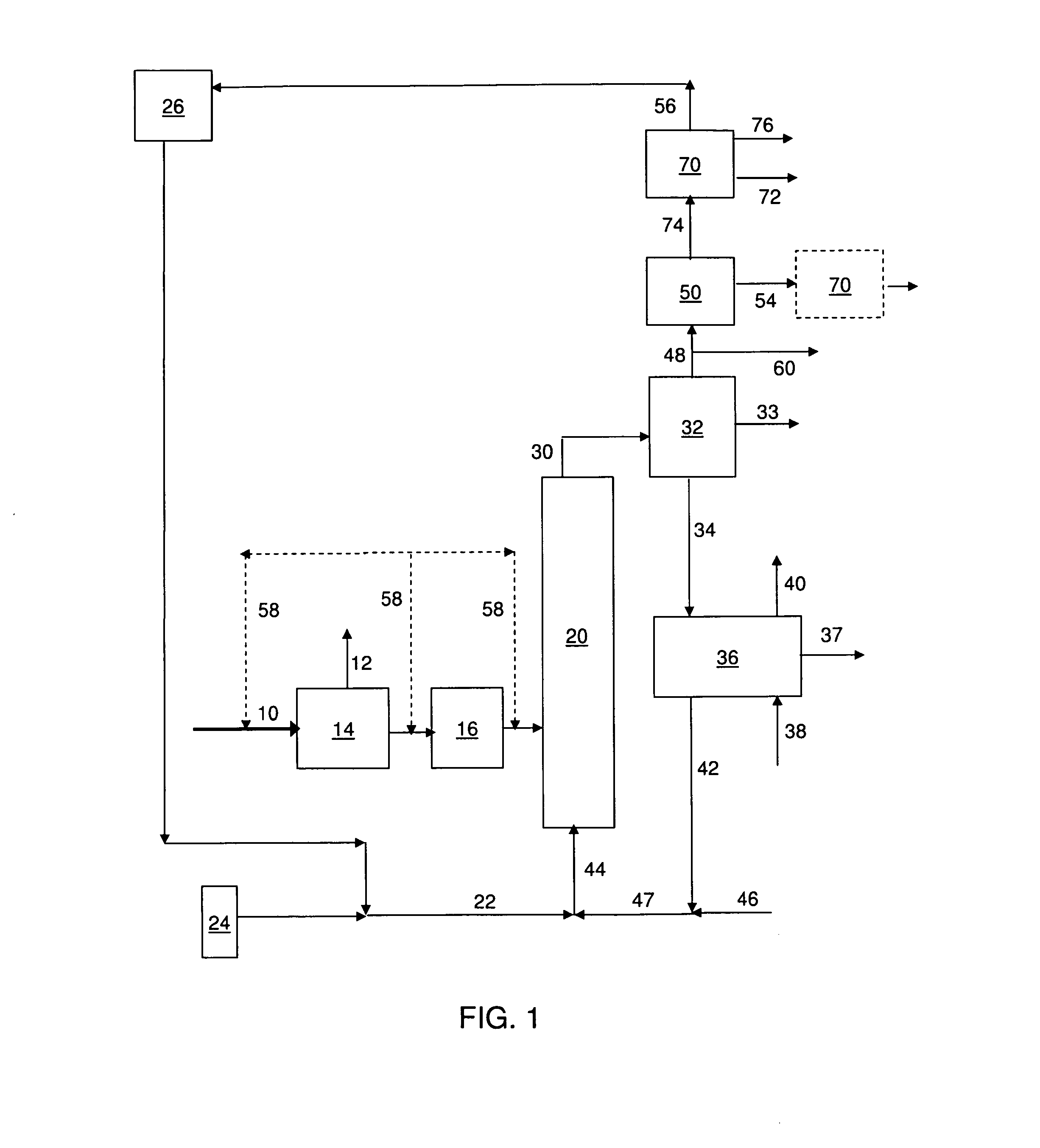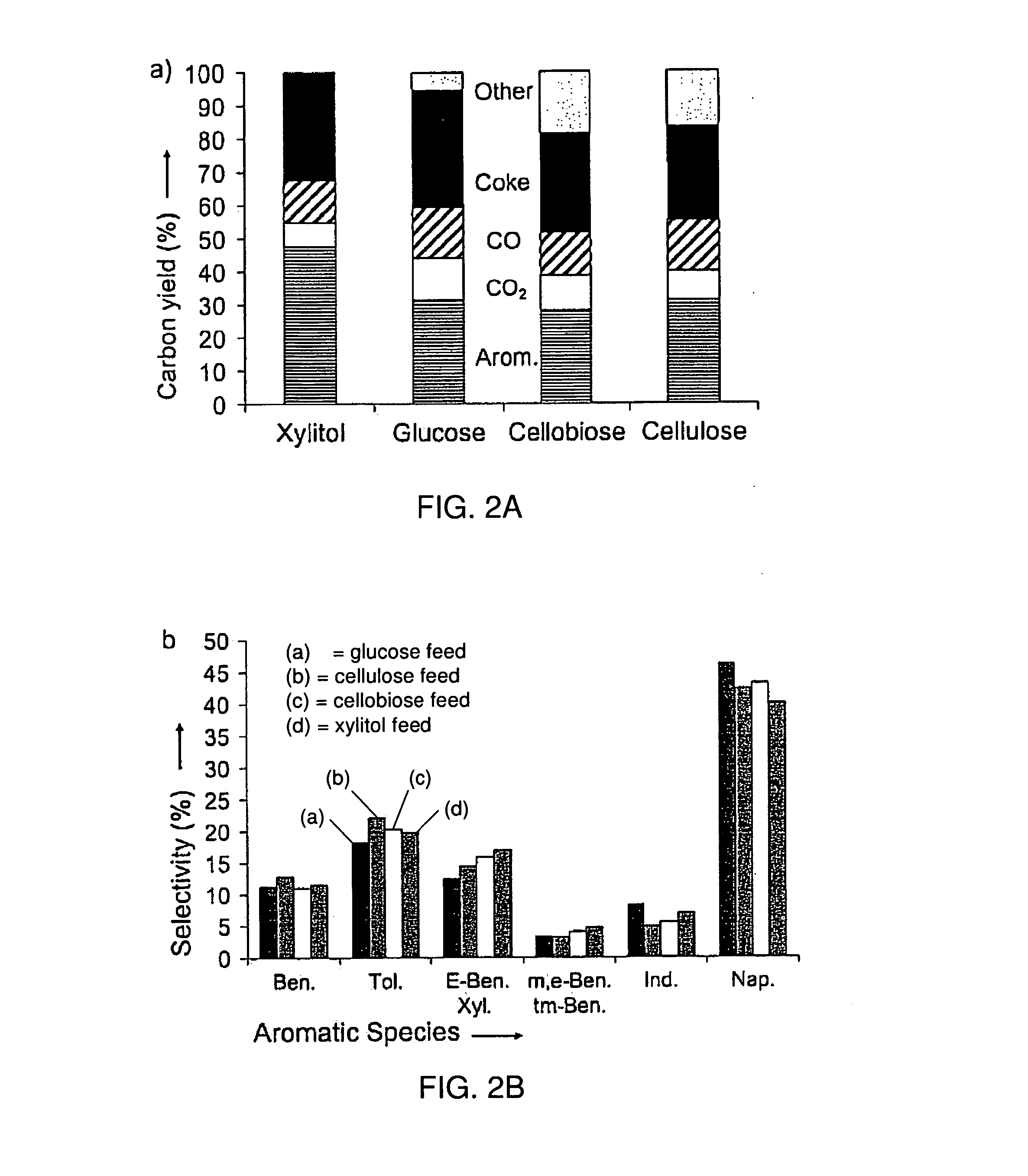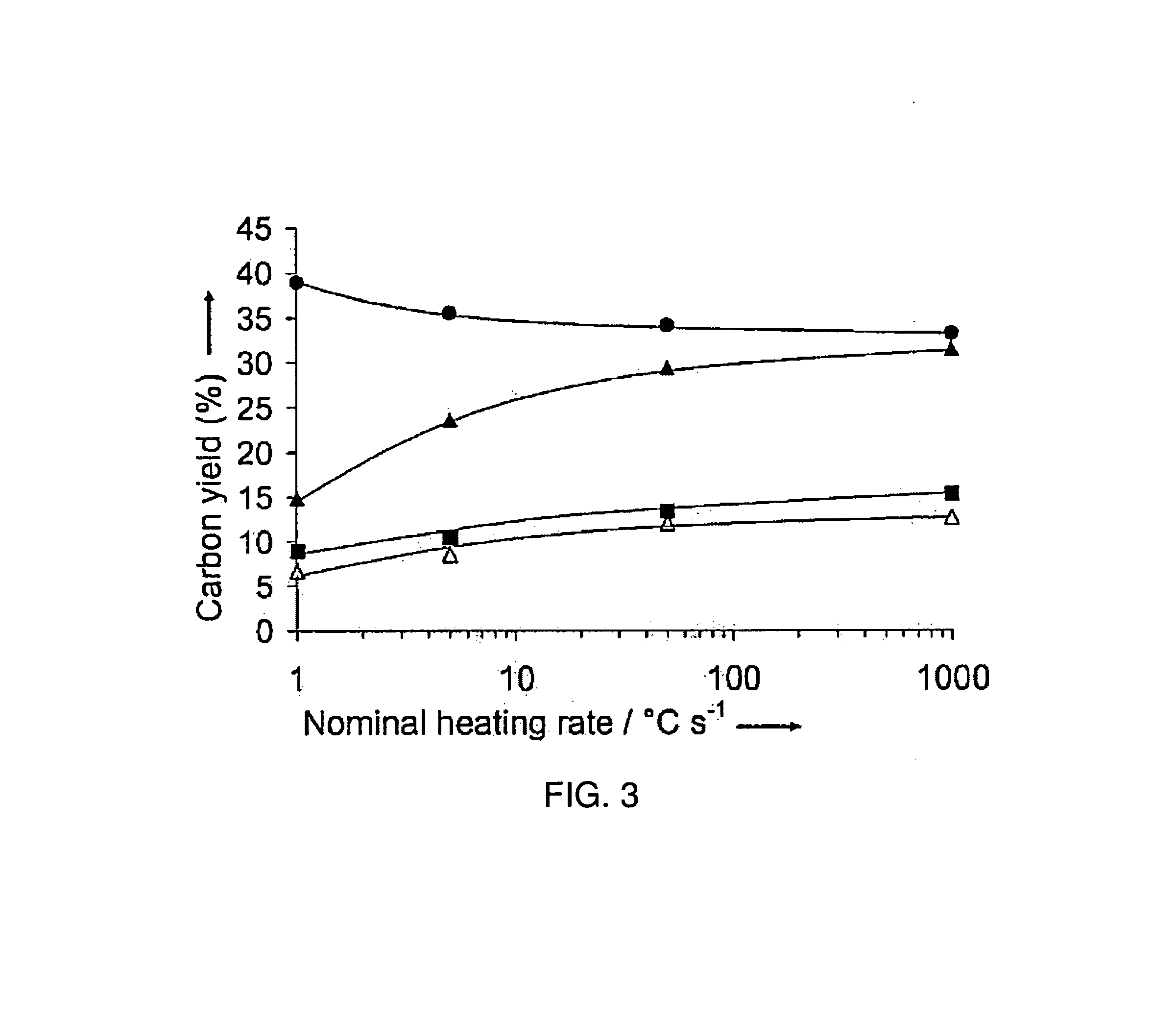Catalytic pyrolysis of solid biomass and related biofuels, aromatic, and olefin compounds
a biochemical and catalytic technology, applied in the field of catalytic pyrolysis of solid biomass and related biochemicals, can solve the problems of low yield, bio-oil is not compatible with existing liquid transportation fuels, and lignocellulosic biomass is not currently commonly used as liquid fuel source, so as to achieve the effect of reducing coke production
- Summary
- Abstract
- Description
- Claims
- Application Information
AI Technical Summary
Benefits of technology
Problems solved by technology
Method used
Image
Examples
example 1
[0128]Representative of several embodiments, catalytic pyrolysis experiments described in Examples 1-9 below were conducted in a Pyroprobe 2000 batch pyrolysis reactor (CDS Analytical Inc.) with powdered catalyst and feed (2 / Al2O3=30); nominal heating rate, 1000° C. s−1; reaction temperature, 600° C.; reaction time (residence time of feed), 240 s. FIGS. 2A-2B show the carbon yields and aromatic selectivity, respectively, for catalytic pyrolysis of xylitol, glucose, cellobiose and cellulose with HZSM-5 (i.e. protonated ZSM-5). The aromatic yields were calculated as carbon yields. Carbon yield was calculated by dividing the moles of carbon in the product by moles of carbon in the feed. The selectivity was calculated as the moles of carbon in a given product divided by the moles of carbon in all products (excluding CO, CO2, and coke (e.g., solid coke remaining on the catalyst)). As can be seen from FIG. 2A, the major products included aromatics, CO, CO2 and coke. Xylitol had a higher y...
example 2
[0138]Powdered reactants were prepared by physically mixing the carbohydrate feed and the catalyst. Both the feed and the catalyst were sifted to 2 / Al2O3 (SiO2 / Al2O3=35). The reaction conditions, product yield, and product selectivities for all pyrolysis runs are summarized in Table 1. All runs were performed with a reaction temperature of 600° C. The yields are reported in terms of molar carbon yield where the moles of carbon in the product are divided by the moles of carbon in the reactant. The aromatic yields were calculated by dividing the moles of carbon in the aromatic product(s) by moles of carbon in the feed.
TABLE 1Summary of pyrolysis experimentsCatalystHeatingReactionAromaticOxygenatedCO2COCokeTotalto FeedRateTimeYieldYieldYieldYieldYieldCarbonUnidentifiedFeedCatalystMass Ratio(° C. / s)(s)(%)(%)(%)(%)(%)(%)(%)glucoseZSM-519100024031.412.615.333.292.57.5cellobioseZSM-519100024028.210.413.030.081.618.4celluloseZSM-519100024031.18.615.228.683.516.5xylitolZSM-519100024047.57.21...
example 3
[0139]In accordance with results summarized above, xylitol and xylose can be converted into thermally stable compounds by catalytic pyrolysis without significant coke formation (see Table 2). Catalyst addition to the pyrolysis process significantly decreases coke formation and increases the conversion to thermally stable products. Five different catalysts were tested for catalytic pyrolysis of xylitol including: silica alumina (SiO2—Al2O3 Grace-Davison 3125), tungstated-zirconium (WOx / ZrO2 MEI X201251), sulfated-zirconium (SOx / ZrO2 MEI X20880), Pt-silica-alumina (Pt / SiO2—Al2O3 prepared according to Huber et al) and ZSM-5 (silica to alumina molar ratio of 35 WR Grace). The catalyst structure greatly changes the product selectivity, and high yields (50%) of aromatic compounds (which could be used as gasoline fuel additives) can be produced with a ZSM-5 catalyst. The system employed detects thermally stable products versus thermally unstable compounds which decompose under GC condition...
PUM
 Login to View More
Login to View More Abstract
Description
Claims
Application Information
 Login to View More
Login to View More - R&D
- Intellectual Property
- Life Sciences
- Materials
- Tech Scout
- Unparalleled Data Quality
- Higher Quality Content
- 60% Fewer Hallucinations
Browse by: Latest US Patents, China's latest patents, Technical Efficacy Thesaurus, Application Domain, Technology Topic, Popular Technical Reports.
© 2025 PatSnap. All rights reserved.Legal|Privacy policy|Modern Slavery Act Transparency Statement|Sitemap|About US| Contact US: help@patsnap.com



